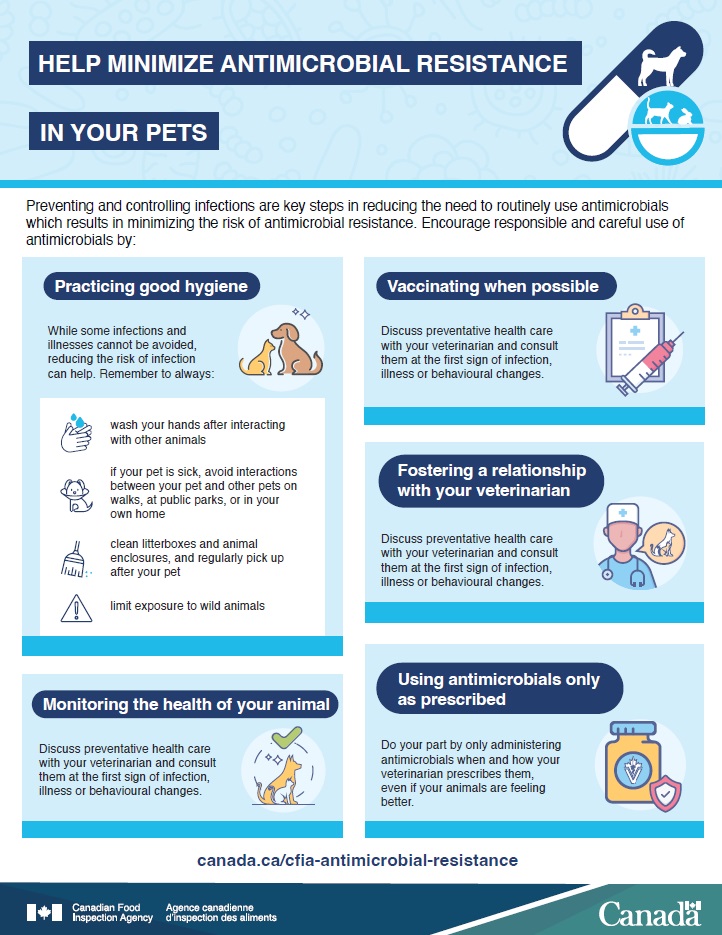
Description for infographic - Help minimize antimicrobial resistance in your pets
Preventing and controlling infections are key steps in reducing the need to routinely use antimicrobials which results in minimizing the risk of antimicrobial resistance. Encourage responsible and careful use of antimicrobials by:
Practicing good hygiene - While some infections and illnesses cannot be avoided, reducing the risk of infection can help. Remember to always:
- wash your hands after interacting with other animals
- if your pet is sick, avoid interactions between your pet and other pets on walks, at public parks, or in your own home
- clean litterboxes and animal enclosures, and regularly pick up after your pet
- limit exposure to wild animals
Monitoring the health of your animal – Discuss preventative health care with your veterinarian and consult them at the first sign of infection, illness or behavioural changes.
Vaccinating when possible – Vaccinating for preventable diseases reduces the chance of illness. Consult your veterinarian to ensure your pets' vaccines are up to date.
Fostering a relationship with your veterinarian – Consult your veterinarian for any questions on prescribed treatments and antimicrobial resistance. Only your veterinarian knows when it is effective and safe to use antimicrobials.
Using antimicrobials only as prescribed – Do your part by only administering antimicrobials when and how your veterinarian prescribes them, even if your animals are feeling better.
canada.ca/cfia-antimicrobial-resistance
